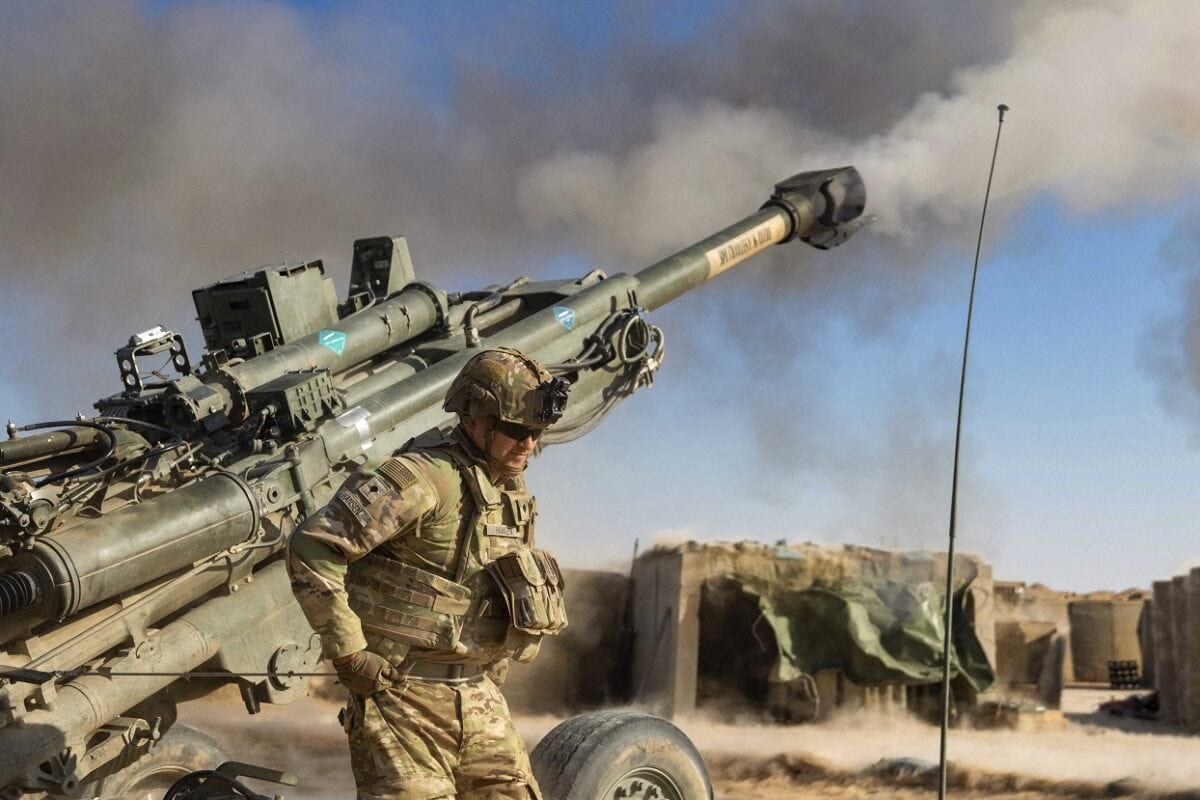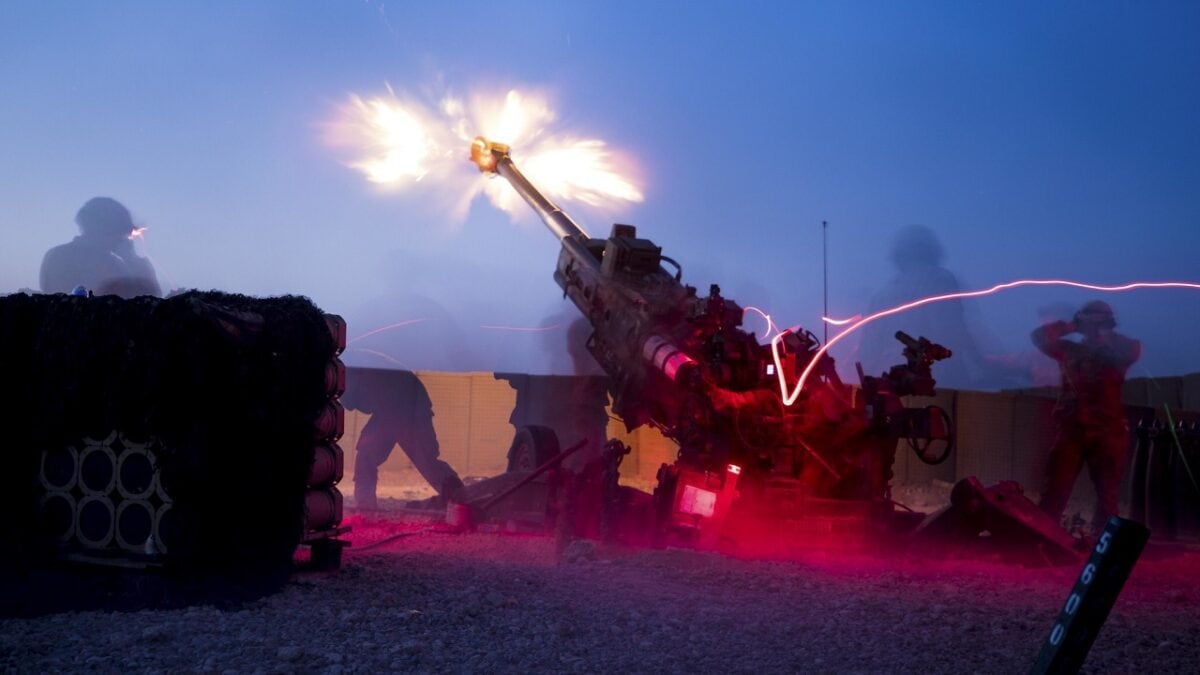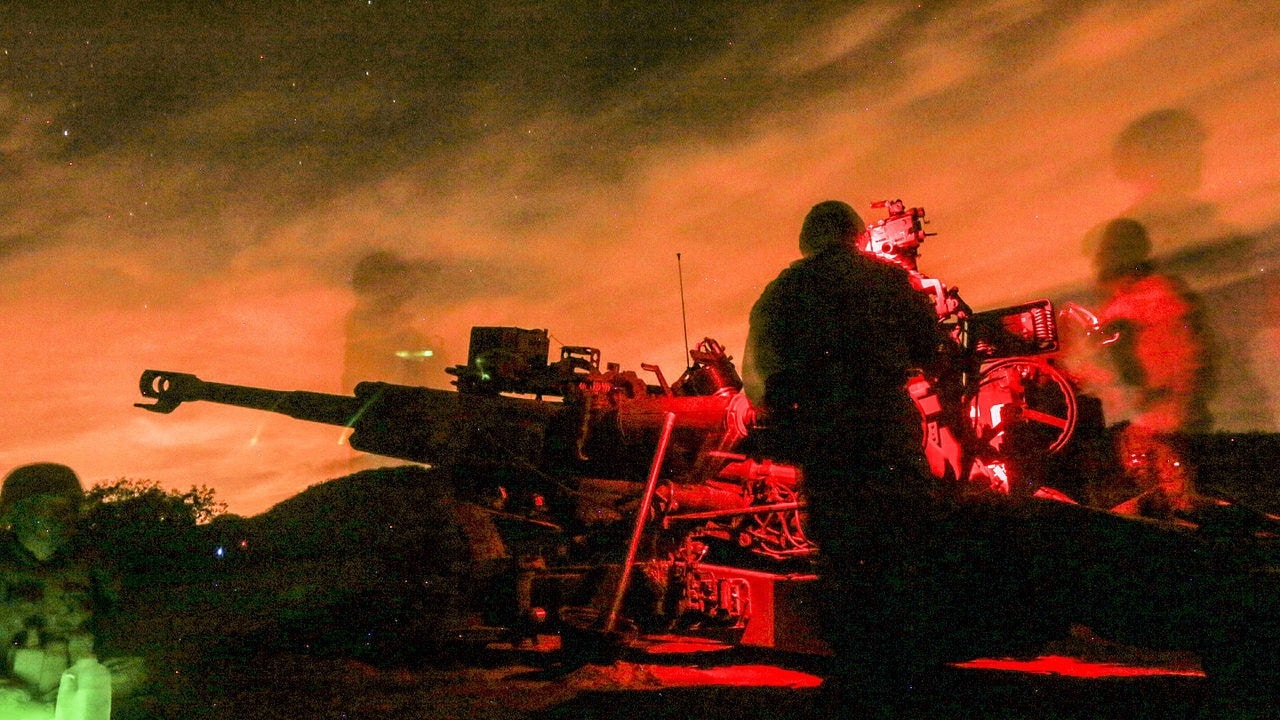This stage of fighting in Ukraine is largely about long-range fires. Both sides are using artillery to “soften” targets so that they can be captured by armor and mechanized infantry units or to deny territory from the other side.
Initially, the Russian military had a great advantage in artillery. But the Ukrainian forces are catching up after repeated shipments of heavy artillery from the U.S. and NATO.
The Artillery War
At the start of the month, the U.S. had committed 90 M777 155mm howitzers and almost 200,000 artillery munitions to Ukraine. But now, a new package of military aid will send Ukraine an additional 18 M777 155mm howitzers with tactical vehicles to tow them, and counter-artillery radars.
The M777, also known as the “triple 7,” uses a digital fire-control system, with navigation, pointing, and self-location functions, which allows the gun crew to fire rounds precisely over long distances. Depending on the round used, the M-777 can hit a target up to 25 miles.
The M777 155mm howitzer first entered service in 2005. It has a crew of eight men, who can achieve a maximum rate of four rounds per minute and a sustained rate of two rounds per minute. The weapon system weighs 8,400 pounds and is about 32 feet long.
A tactical 6×6 vehicle often comes with the M777 155mm howitzer to provide mobility. A well-trained crew can arrive in a position and start firing within three minutes and pack the gun and move again in three minutes, thus making the M777 155mm howitzer a highly maneuverable weapon system that can avoid counter-artillery fire.
And the Ukrainians are putting their new weapons to good use. The Ukrainian artillerymen have been establishing kills zones, taking out Russian tanks, armored personnel carriers, and infantry fighting vehicles, with remarkable ease. To make them more effective, the Ukrainian artillerymen are using tactical unmanned aerial systems for reconnaissance and fire correction.
Training the Artillerymen
Proving Ukraine with the critical weapon systems to fight back against the Russian forces is only one part of the equation. An equally important factor is giving the Ukrainian forces the training required to properly and effectively operate the weapon systems.
Some are easier to handle than others. For example, the FGM-148 Javelin anti-tank missile, the FIM-92 Stinger anti-aircraft weapon, or the Next Generation Light Anti-tank Weapon (NLAW) are all pretty easy and straightforward to use. They are intentionally designed so that troops can quickly learn how to use them.
But operating an M777 155mm Howitzer effectively has several moving parts and is a lot more complex. The U.S. military has been holding courses on the M777 for Ukrainian artillerymen in order to bring them up to speed on the weapons system. Approximately one week long, the courses are taking place in Germany and other nearby European countries.
“We, obviously, want to train them [the Ukrainian forces] on how to use the M777. Which is not that alien a system to them and our artillery piece that there’s not that many differences. So that’s why the training can be done as quickly as it can be done. But in the training of the M777, the Ukrainians often do pose to their instructors, you know, hypothetical scenarios about how you would use it in this case or that case. And so, I mean, they know what they’re up against,” a senior U.S. defense official said.
But the training the U.S. military has been providing their Ukrainian counterparts is highly interactive. Ukrainian artillerymen will rotate from the frontlines to training and then back, bringing with them a lot of practical lessons-learned.
“We’re pulling the artillerymen out of the fight to learn these howitzers and then putting them back in. And so, they actually bring to the training a sense of perspective and curiosity about the howitzers that our instructors are finding interesting, and trying to help them with the battlefield scenarios that they’re facing. Which is including, you know, proper ranging. So I mean, I think it’s all happening at once,” the senior U.S. defense official said.
To be sure, the job of the Ukrainian artillerymen is eased by the fact that they are already operating the D-30 122mm and 152mm MSTA-B howitzers, which share some resemblance with the M-777.
“We’re not just bringing them out and saying, Okay, you know, here’s the mechanical solution to how to use it. It’s how to use it yes, but also how to use it in the fight that they’re going back to. And that’s all part of the training,” the senior U.S. defense official added.

A Soldier conducts registration and calibration for the M777A2 howitzer weapon system in Syria, Sept. 30, 2021. U.S. Army photo by Spc. Isaiah J Scott

Soldiers assigned to the 2nd Battalion, 32nd Field Artillery, 1st Brigade Combat Team, 101st Airborne Division, fire a M777 towed 155 mm Howitzer on Qayyarah West Airfield, Iraq, Aug. 10, 2019. The Soldiers conducted a fire mission to disrupt known enemy positions. As long as Daesh presents a threat, Combined Joint Task Force – Operation Inherent Resolve remains committed to enabling its defeat. (U.S. Army Reserve photo by Spc. DeAndre Pierce)
Artillery may end up determining who wins in the Donbas. And the Ukrainian military, supplied with Western artillery pieces, has the potential to gain the upper hand in the artillery battle. The next weeks can determine who ends up winning the war.
1945’s New Defense and National Security Columnist, Stavros Atlamazoglou is a seasoned defense journalist specializing in special operations, a Hellenic Army veteran (national service with the 575th Marine Battalion and Army HQ), and a Johns Hopkins University graduate. His work has been featured in Business Insider, Sandboxx, and SOFREP.

